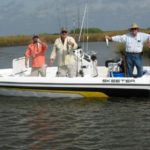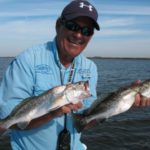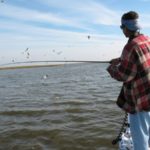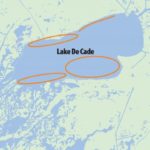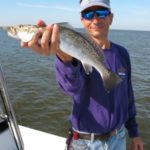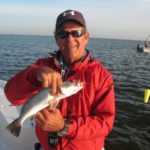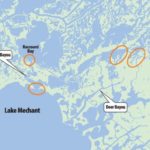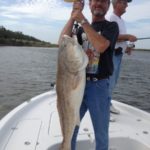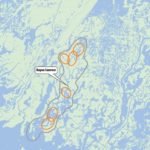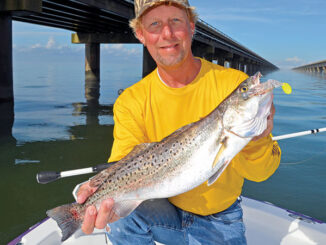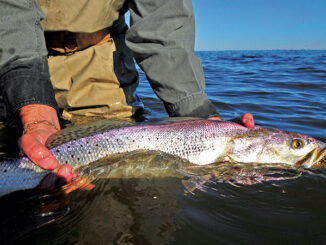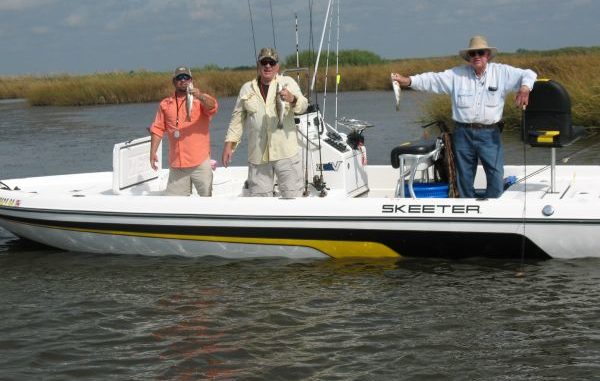
Cold fronts should keep water temperatures in the cellar this month, but that doesn’t mean Dularge trout won’t bite. You just have to know where to go.
“Most of the world is covered by water. A fisherman’s job is simple: Pick out the best parts.” — Charles Waterman
Picking out the best parts of water to fish is harder than it sounds, particularly here in Southeast Louisiana where every body of water along our coast teems with nature’s bounty.
But it’s a challenge we anglers relish, and in December you’d be hard pressed to find a starting spot any better than Dularge. I’ve made several trips in the area over the past couple years and always found it productive.
This most recent trip was no exception.
Capt. Gerald Ellender (985-688-1715) agreed to guide me and buddy Kevin Bergeron into the heart of Dularge’s speckled bounty to see if we could find something to take home in the ice chest. After a short ride through Houma and then down La. 315 to Dularge, Bergeron and I drove over the levee and met Capt. Ellender at his boat dock.
Daylight was just breaking as we loaded our gear into his 24-foot Champion Bay Boat and a brand-new 300-horsepower Yamaha pushed us down Bayou Dularge toward our destination.
“Most of our action is going to be found in three or four main areas this month,” Ellender said. “If we have a cold month, then the fish will move up into the deeper canals and bayous. But even on those days they’ll fan out over shallower flats when the sum warms things up.
“On moderate days and mild days, we’ll fish the oyster reefs in some of the bigger bodies of water: Lake Mechant, Sister Lake, Lake DeCade and Moncleuse Bay — anywhere you see the oyster reefs marked by those white PVC poles.”
The strategy is pretty straightforward.
“You can drift in there or use your trolling motor and cast plastics under a cork, and when you catch a keeper fish, anchor the boat with a Power-Pole or Cajun anchor. Or I’ll just push the anchor button on my trolling motor, and it’ll hold the boat right there in that position,” Ellender said, pointing to the Minn Kota i-Pilot trolling motor
The motor looked odd up there, and the fact that it has no control handle and no foot pedal meant it was entirely remote controlled. This was my first experience seeing the new trolling motor technology in actual use, and I was eager to see how it’d perform.
The i-Pilot has a built-in GPS, so when you press the anchor button the motor will automatically hold your boat in that GPS position until you release it.
“Another great advantage of the remote-controlled trolling motor is that I don’t have to be up on the bow of the boat in the premier casting position to steer the trolling motor,” Ellender said. “I can steer from the back and allow my customers to stand up front and fish off the bow.”
Motorguide has its own wireless remote version — the Xi5/Pinpoint system.
Ellender said where to fish wasn’t a big secret.
“So we’ll fish the oyster reefs, and we’ll fish the canals and bayous, and another thing we’ll do this month is fish the birds,” he said. “The birds are still very active, just as they’ve been in late October and November, and they’ll be out in force this month as well.
“Naturally you may have to weed through some throwbacks, which is typical anytime you fish under the birds, but you’ll also catch a lot of keepers.”
As we made our way toward our first stop, we passed a couple of nice-sized flocks of birds diving and feeding actively in Lake Mechant. I could see a hint of hesitation in Ellender’s eyes as he motored past the first flock of birds, and the temptation to stop and fish under the second flock was just too hard to resist.
“Let’s give this a try for just a few minutes,” he said. “I want to see what’s under them.”
Ellender circled wide of the flock to get upcurrent and let the boat drift toward the frenzied birds. Once within casting distance of the action, we tossed soft plastics under a cork and fish — small throwback trout — inhaled them. After five minutes and only one keeper, Ellender was ready to go.
“If the birds are still working in here on the way back in we’ll give them another try,” he said. “Some of the flocks are over bigger fish. Don’t give up on fishing the birds just because you find small fish or sail cats under a flock. That’s going to happen.
“But you’ll also find some schools of good fish under the birds, and you can put 20 or 30 fish in the box in just a few minutes. Or you might even limit out right there under one flock of birds. It happens.”
Ellender’s plan was to show us some of Dularge’s premier spots for December fishing, for both trout and reds, and I was an eager student.
Lake DeCade
“Lake DeCade will be red hot this month,” Ellender said. “From Dularge, it’s a six-mile run, so if you plan to fish it you should launch at the Falgout Canal Marina, which is much closer. The lake is big, and averages between 3 to 5 feet of water, so it’s safe to run in. The deeper channel is in the middle, about 5 feet deep, and that’s where the fish will huddle in colder weather.”
But there is a sweet spot.
“The best-known hotspot in Lake DeCade is the southeast cove near the sunken tug boat around Christmas Tree Point,” Ellender said. “Contrary winds can make that spot unfishable, and when that happens then you’ll want to fish along the north and western banks and look for bait activity and birds.
“There are some washouts along those banks that will hold fish, and soft plastics under a cork will produce some great catches.”
But there are other options.
“Another great colder-weather spot this month is the dead-end canals off the Falgout Canal right by Lake DeCade,” he said. “We like to say they get hotter as the weather gets colder. What happens is the fish will travel up into the marsh as far as they can go, and often when they get in those dead-end canals — that’s as far as they can go.
“So they stay and huddle up in there, and when you find them you can sometimes really load up your ice chest with nice fish, both trout and reds.”
Raccourci Bay
Ellender said there are a couple of prime fishing spots in Raccourci Bay: The mouth of Raccourci Bayou at Raccourci Bay and the mouth of the bayou on the opposite end at Lake Mechant.
“Those areas will be loaded with trout, and since Raccourci Bayou is one of the main tributaries into Lake Mechant, it also holds plenty redfish and flounder,” he said. “You often see birds working at these spots because a lot of bait passes through this bayou. There is a deep channel — between 15 to 25 feet deep in the middle — so what you want to do is anchor in the shallow water on the edge off the points and throw your bait back into the deeper water.
“I like to use swim baits like the Tsunamis or double rigs, and you can fish under a cork or use live baits on a Carolina rig here for flounder and reds, as well.”
Water movement is a requirement, he said.
“It’s an excellent spot, especially on a falling tide,” Ellender said. “Any current will produce, but I prefer a falling tide in the winter months.”
Ellender said his favorite tactic is to throw his bait upcurrent and let it go to the bottom, and then just slowly let it hop along the bottom or roll back toward him with the current.
“The reds and flounder will pick it up and run with it,” he said.
Deer Bayou
Ellender said the entire length of Deer Bayou will hold fish when temperatures drop.
“It can be quite a maze up in there of canals, (as well as) ponds and channels,” Ellender said. “The main bayou is pretty deep in the middle, so it attracts trout, reds and flounder because a lot of water and bait passes through it. There are dozens of drains and tributaries and ponds to fish, and keep an eye open for birds because they work all along Deer Bayou, also.
“Look for signs of bait in the water, or current lines around a point — anything that shows movement in a potential spot.”
Soft plastics tight-lined and under corks and Tsunami swim baits are good baits here, Ellender said.
Bayou Sauveur
This is another bayou the length of which holds fish in December and January.
“It has everything from deep channels to washouts to shell banks and deep turns — all the features that attract and hold fish,” Ellender said. “Look for birds, look for good water movement around points and in turns where you see shells on the bank, look for current lines and look for any signs of bait in the water.
“The bayou itself is deep — 8 to 10 feet in places — and a lot of current moves through it. I fish the dead-ends off it; I like to drift or troll until I hit some fish, and then I’ll anchor and stay as long as I’m catching keeper fish.”
Ellender moved us around quite a bit that morning, and we caught fish every place we stopped. We caught fish under the birds and by drifting, and the hot bait of the day was a small glow/red tail Vudu shrimp fished about 2 feet under a cork tossed by my buddy, Kevin Bergeron.
Capt. Gerald Ellender can be reached at 985-688-1715.
